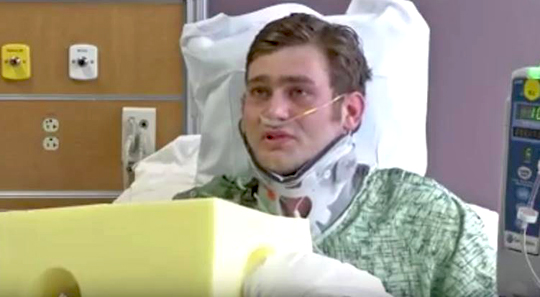Houston, Feb 24: A 24-year-old American who is being hailed as a hero for trying to stop a shooter who killed an Indian in Kansas City, today said it was "actually the right thing to do".

Ian Grillot hid behind a table when the 51-year-old gunman, Adam Purinton, started shooting hurling racial slurs following an altercation at Austins Bar and Grill killing an Indian techie and critically injuring other.
He counted the gunshots and when he thought the shooter was out of bullets, he jumped up to stop him but Purinton still had one round left, which he used it to shoot him and the bullet went through Grillot hand and into his chest.
"I guess I miscounted," Grillot said in an interview from his hospital room, in a video released by the University of Kansas Health System.
"I got up and proceeded to chase him down, try to subdue him...I got behind him and he turned around and fired a round at me," he said.
"I was doing what I should have done for another human being. It's not about where he (victim) was from or his ethnicity. We're all humans, so I just did what was right to do and I didn't want the gentleman to potentially go after somebody else," Grillot said.
Grillot said he learned Alok Madasani, another Indian's, wife is five months pregnant and that he considers the engineer his new best friend, the Kansas City Star report said.
"One of the gentleman that survived he came in here today and it was the greatest thing I can't even describe it coming to find his five months pregnant wife.
Something was guiding me to do what I did, somebody was watching over me I'm just very grateful that one of the gentlemen is fine and alive. It's terrible what happened to his friend. But I think he was watching over us last night," Grillot said.
He said he hopes the two can spend some time together when they get out of the hospital. "I don't think it's going to be at the bar, though," he said.
"It just put the biggest smile on my face," Grillot said when he saw Madasani earlier in the day.
Indian engineer Srinivas Kuchibhotla, 32, who was working at GPS-maker Garmin headquarters in Olathe, was killed while another Indian man and his colleague Madasani was critically injured after Purinton, a Navy veteran, started shooting hurling racial slurs following an altercation on Wednesday night atthe bar.





Comments
Add new comment